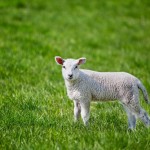International demand for pork raises farmgate pig prices
British pig prices have enjoyed some strength over recent weeks, climbing to 131 p/kg dwt – an increase of 17% since March – the latest Quality Meat Scotland (QMS) market information has revealed.
In Europe the average price has climbed 30% since March to sit some 10% higher than a year ago.

Stuart Ashworth, head of economic services, QMS.
“These relative price movements have resulted in the unusual situation of UK producer prices – when quoted in Euro – being lower than the European average – a situation which diminishes the attractiveness of European pork on the UK market and helps to support UK prices,” Stuart Ashworth, QMS’s head of economic services, said.
In the UK, prime pig slaughter numbers dipped below last year’s levels in May and June, but higher carcase weights have resulted in production changing little from last year.
“Producer price improvement is not then being driven by a reduction in supply,” Ashworth commented. “Farmgate prices have risen in response to the dramatic changes in international demand for pork.
“China has returned to the market following a significant reduction in their pig herd and both the UK and Europe have gained from this, but so too has the USA.”
According to Ashworth, UK pigmeat exports to China have increased by 70% over the first five months of the year. There has been even more dramatic growth across the European Union, where sales of pigmeat – mainly frozen product – to China between January and the end of May increased from 130,000 tonnes in 2015 to almost 400,000 tonnes in 2016.
Sales of offal to China have also grown by 50% whilst Hong Kong, Japan, the Philippines and Australia have also increased their supply of European pig meat.
“This strong demand pull is unlikely to diminish in the short term, although it may stabilise as Japan’s herd recovers from the impacts of the PEDv virus and the Chinese sow herd begins to rebuild,” Ashworth said.
“In 2015, the Chinese sow herd was estimated to be 15% smaller than it had been four years ago so, while there is scope for the sow herd to grow, it will take some time before that will materially impact on Chinese import requirement.”

 HCC deems Llamb’s Day a success
HCC deems Llamb’s Day a success Adding value to prime lamb addressed at NSA event
Adding value to prime lamb addressed at NSA event
